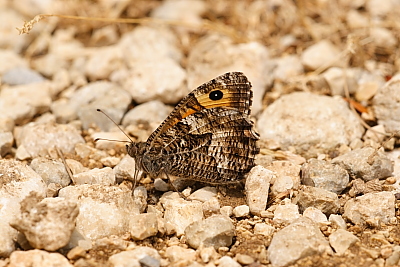
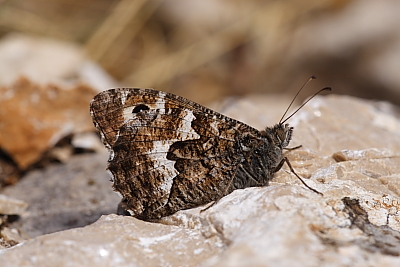
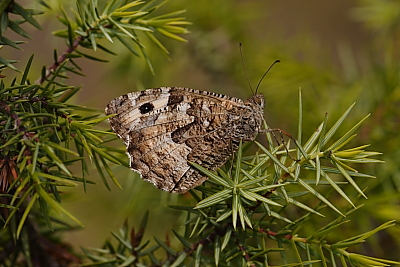
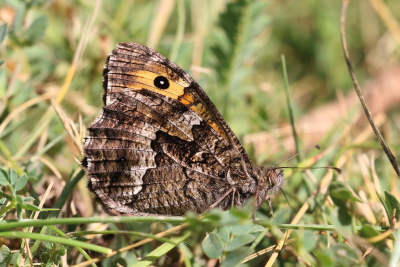
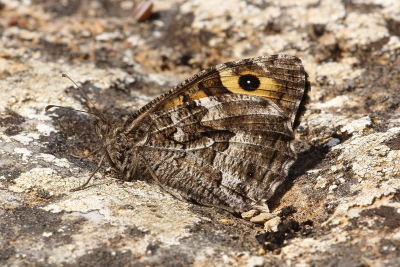
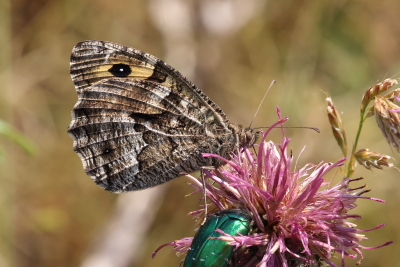
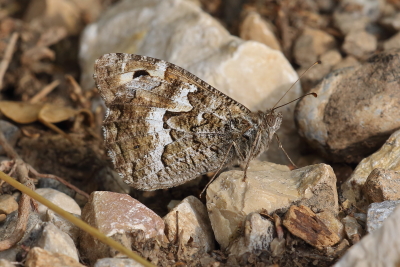
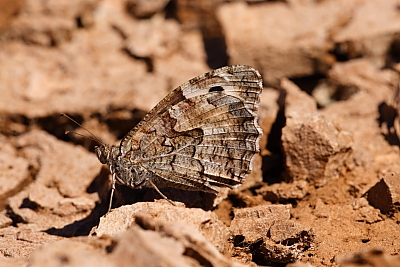

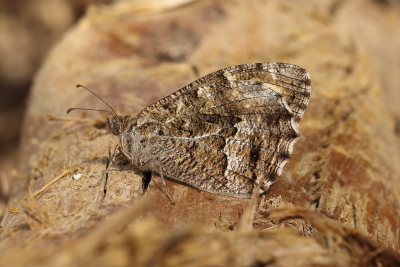
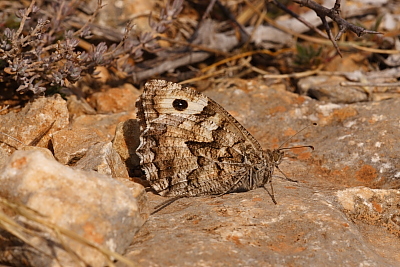
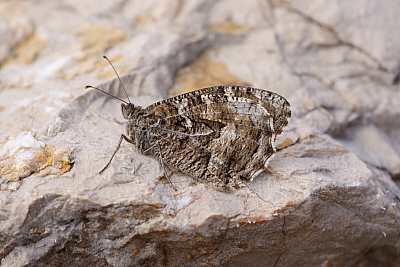
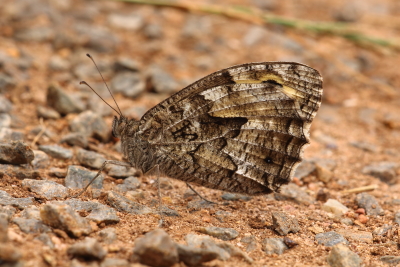
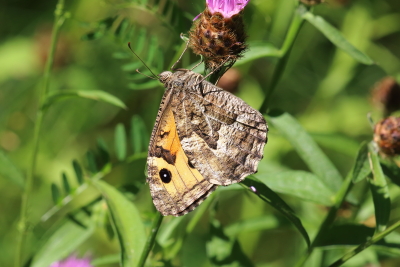
Grayling (Hipparchia semele)
2024 photographs highlighted in yellow. Click on any photograph to go to an enlarged picture, or simply scroll down the page.
|
In the UK, there is no question of mis-identification, but there are a number of close relatives in France although most are clearly distinguishable from semele (but not necessarily from each other). There is also the very similar Southern Grayling (H. aristaeus) but this does not occur in mainland France, which is just as well, as I have seen individuals that are almost identical to the book illustrations of aristaeus.
The male semele has a more pronounced unh white post-discal band, with a (usually) less jagged discal line than in the female. These are all of the subspecies cadmus which is the normal form in southern France, with an altitude range of 0-1700m. It is larger than the nominate form, quite noticeably so, with a dark unh basal area and white post-discal band clearly defined, more so in the male.
In the UK, semele is largely restricted to coastal regions, although in Var it is very much a mid-altitude species, where I usually find it at 500m to 1000m and often higher. It is not usually found in large numbers, and often scarcer than its Hipparchia relatives with which it often flies. It always settles with wings closed, but has a lighter upperside than many of its relatives, so can often be identified in flight. |
There is some question as to the emergence period of semele. Many books suggest that it emerges in June and goes into immediate aestivation (summer hibernation), re-emerging in September. It is not totally clear to me why they should want to do that, especially in northern Var at 920m altitude where the temperature stays tolerable compared to the lower regions of Var nearer the coast.
Also they would have to aestivate immediately, as the specimens I see in September are nearly always pristine. I am quite happy to accept that they do aestivate but would like to understand why they do it.
|
| ref | sex |
observations |
alt. m |
| 16860 | M |
a male, nice and clean unh markings, with the unf showing slightly, also nice and cleanly marked and attractively orange. |
900 |
| 19371 | M |
a male, rather monotone black and white. |
920 |
| 14395 | M |
a rather dark male, with no real indication of the unf orange markings. Very little contrast across the discal line, and a strangely rounded (c.f. the other photographs) discal line shape. |
780 |
| 41010 | M | a male taking salts from damp ground. It is quite dark and crisply marked, and complemented by the orange around the unf ocellus. | 1220 |
| 43558 | M | a male, rather appealing warm orange showing on the unf. It is very well camouflaged against the lichen-covered rock. | 640 |
| 46191 | M | a male, probably, on the strength of the lighter area in the post-discal region. The discal line is quite jagged, so maybe 46191 is a female after all. | 670 |
| 48884 | M | a male, with a very clear white band external to the discal line. A little worn, but it illustrates its ability to merge into the stony background. | 780 |
| 23486 | M |
a male, I suspect, as the discal line is quite rounded and there is noticeable contrast across the discal line. |
920 |
| 46188 | F | a female, I believe, on the basis of the stronger unf markings that are clearly visible. However, this seems to conflict with the notion that the discal line is less jagged in the male and there being greater contrast across the discal line in the male. | 670 |
| 44594 | F | a very dark female with very little contrast across the discal line. | 1550 |
| 14323 | F |
a typical, rather dull, female. |
920 |
| 23720 | F |
a female, based on the very jagged discal line in the centre. |
920 |
| 51455 | F | a female, based on the very jagged discal line in the centre. | 990 |
| 51601 | F | a female, based on the very jagged discal line in the centre. | 130 |
16860_male_Alpes-Maritimes_27Jun09
43558_male_Bouches-du-Rhône_29Jun17
44594_female_Alpes-Maritimes_18Jul17